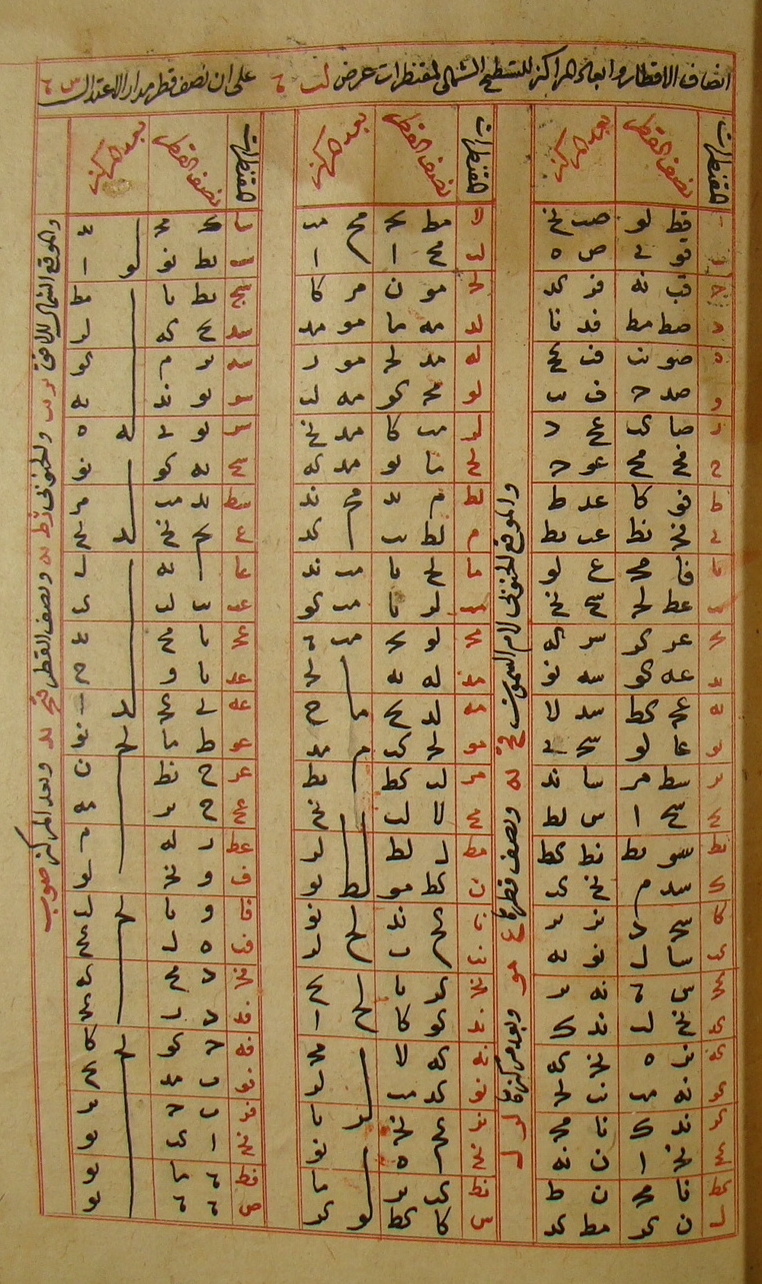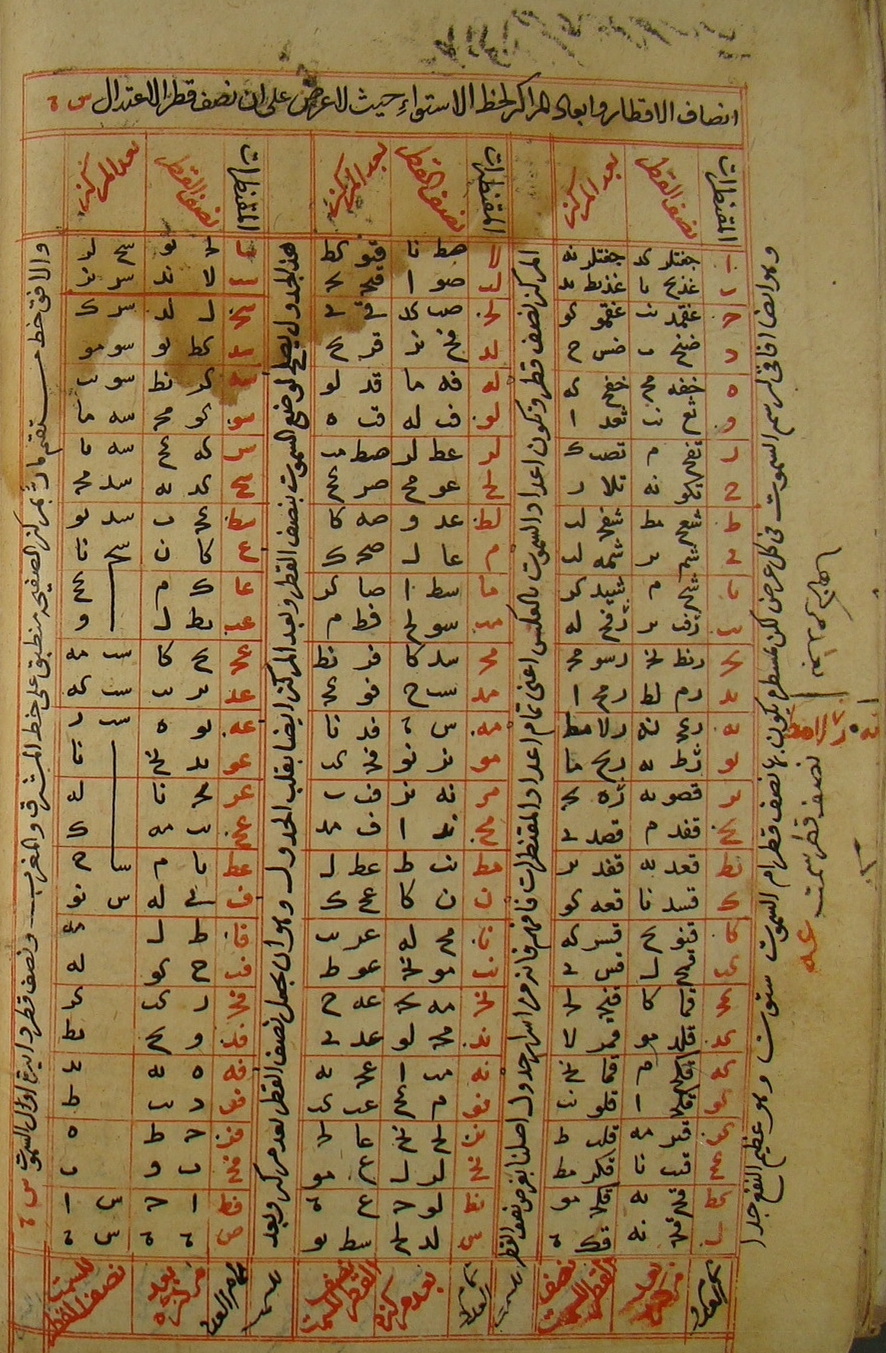For the Abjad workshop in the Mathematics Village, we used the following material:
Handout with a general (interactive) introduction to the abjad number system.
This handout was printed and a copy of it was handed out to each participant at the beginning of the workshop.
Presentation, basically an introduction to the system and online solution of the first exercises (after the participants had worked them out themselves).
Extra material was also distributed:
Photo 1 and Photo 2 in the handout refer to pictures of a Turkish astrolabe in the History of Science Museum of Oxford which are available online. See also the general introduction on this astrolabe on the Oxford museum website.
Table A and Table B in the handout are tables in the treatise on the astrolabe by Taqi al-Din, which are needed in the
workshop on drawing the astrolabe the next day. These tables were printed and handed out to the participants.


Table A (left) is for the construction almucantar plates for latitude 32 degrees.
Table B (right) is for the construction almucantar plates for latitude 0 degrees, and it is also used by Taqi al-Din for drawing azimuthal circles. This table is interesting because it contains high abjad numbers.
Click here to obtain larger files: Table A , Table B.
After our return to the Netherlands, we transcribed tables A and B. Here are the transcriptions (so the reader can check his readings of the abjad numbers):
Transcription of Table A, Transcription of Table B.
In the transcription the following abbreviations have been used:
a: number (altitude of almucantar), r: radius, d: distance to centre,
z: azimuth (measured from the East point or West point, the azimuth is always a number between 0 and 90)
In our abjad workshops, the handouts are usually almost the same. The material is always adapted to the concrete purpose of the worskhop. In this case: to prepare the participants for the workshop on the next day.
See also the webpage on abjad workshops held elsewhere.
Back to the main screen on our visit to the Mathematics Village.